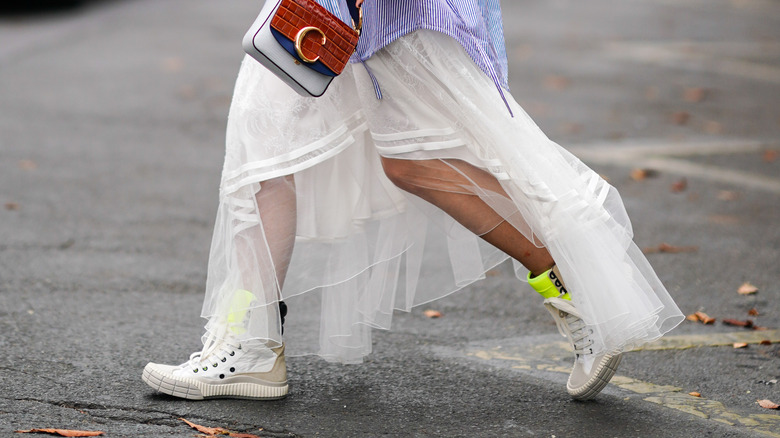The 'Hemline Index', Explained - Does Skirt Length Really Change With The Stock Market?
Trends come and go, but some have more of an impact on the world around us than others. In the 1990s, flannel shirts, platform shoes, and baggy jeans were the main players in the fashion game. In the 2000s, dresses over pants and low-rise jeans reigned supreme, whereas 2010s fashion revolved around skater skirts and colorful skinny jeans. Now, both miniskirts such as the micro miniskirt trend of summer 2022 and longer midi and maxi skirts are commonly seen.
Hemlines have changed throughout history, and, when it comes to dresses and skirts, every style and iteration has been covered throughout the last 100 or so years. Though hemlines come mostly down to changing trends, some people believe that the hemlines of skirts and dresses are affected by outside factors such as politics and the economy. The theory is in fact so popular that there's a term for it — the "hemline index." So, what exactly is the hemline index, and what could skirt length possibly have to do with the stock market?
The theory intriguingly combines fashion and finance
The basic premise of the hemline index is that it matches the mood of the economy. When the economy is on the rise and people have more money to spend, hemlines get shorter as people enjoy themselves. On the other hand, when the economy is stagnant, and people don't have spare money, hemlines are longer to reflect the more somber mood.
It may sound like a coincidence, but there is quite a lot of evidence that has led people to link hemlines and the economy together. For example, during the early to mid-roaring 1920s, hemlines got scandalously shorter for the first time in history when compared to the fashion of the 1910s, particularly during World War I. When the Great Depression occurred in the late 1920s and 1930s, longer hemlines were more in fashion — no knees on display. Longer hemlines took center stage again in the 1940s during wartime, whereas miniskirts became popular in the 1960s when the economy had recovered in a lot of the world.
It isn't all it appears to be, though
However, the idea of skirt lengths lining up with the state of the economy at the time doesn't add up when you do further research. Speaking to InStyle, curator of the Museum of Industry & History Clara Berg explains that the theory especially doesn't make sense during the post-war eras. The economy would definitely have influenced these periods of time, and you would expect shorter hemlines to be more desirable to women rather than long ones.
However, Berg states that longer skirts were actually viewed as "a symbol of prosperity" due to the cost of fabric — the longer your dress or skirt, the more fabric you would have to buy. This reflected the desire to leave behind rationing, too. As women had to ration many things during wartime, a longer hemline that required more fabric to make would be far more desirable, as it showed you were not settling for a short skirt due to the cost of fabric.
Although the hemline index idea sounds good in theory, it should not be considered a legitimate marker of stock market changes.


